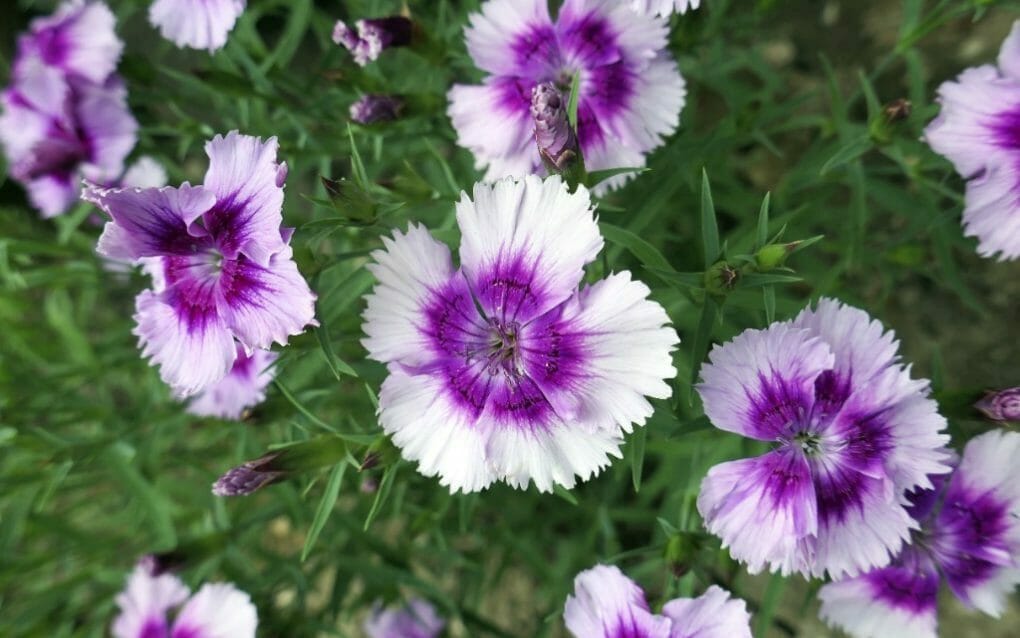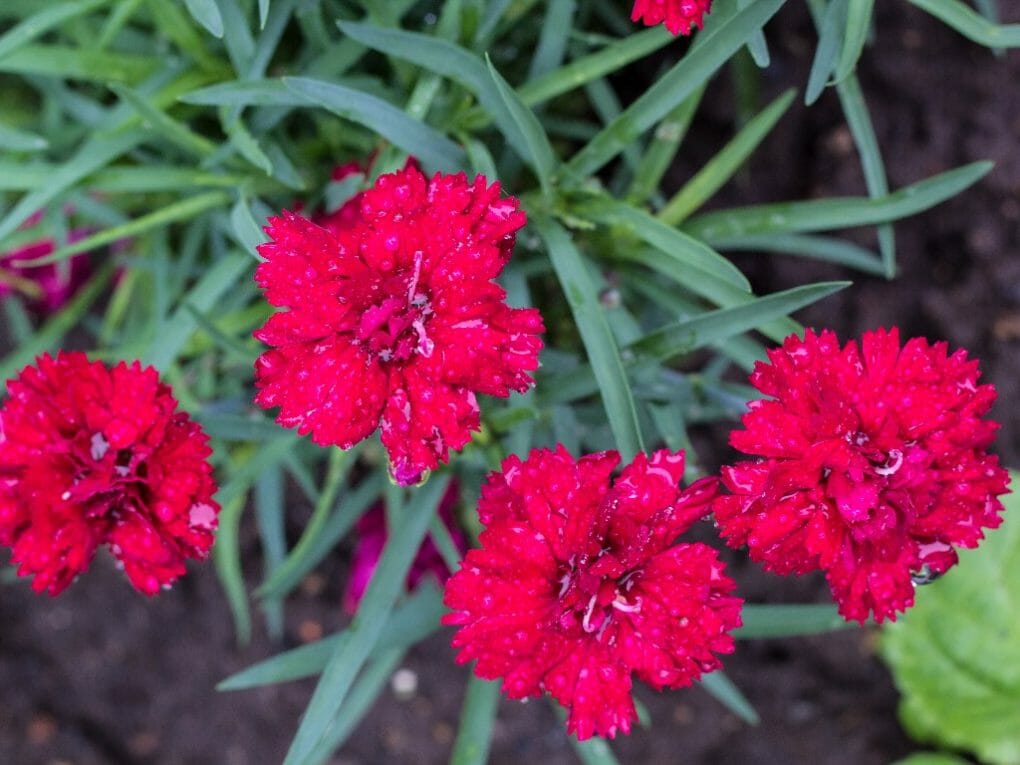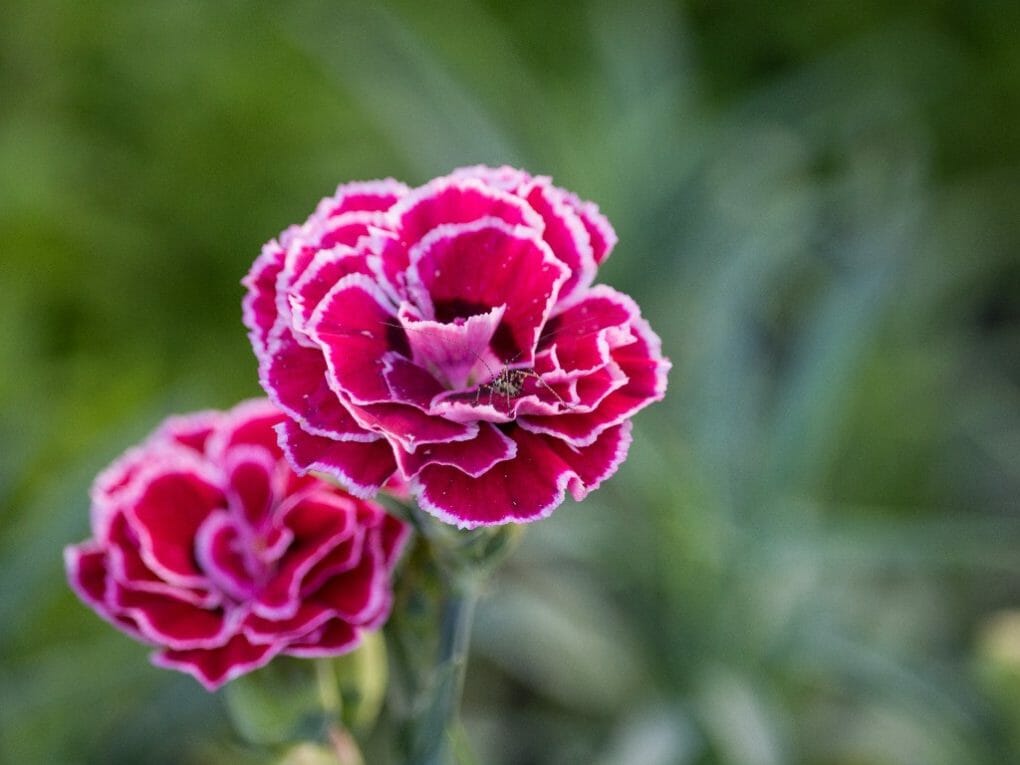Do Carnations Bloom All Summer? Proper Care for All Summer Blooming Carnations

Carnations bloom all summer long after planting in early spring, between May and July. Their long stems and vase life make them perfect for any flower arrangement. If you’re looking for an attractive flower that can add a touch of elegance to any space, then the carnation might be a good option. This favorite has long been famous as a symbol of love and affection, and its soft white petals are often used in bouquets or decorating ceremonies. Carnations also make great indoor plants because they require little maintenance once they get established. In addition to their decorative value, carnations are known for their potent fragrance that is both pleasing and uplifting. If you love to enjoy your carnation, here are tips for properly caring for your beautiful blooms.
Table of Contents
Proper Care for All Summer Blooming Carnations
Deadheading
Keep your carnations in tip-top shape by doing regular, thorough pruning. They can be pruned by removing spent blooms and foliage while they are still young and manageable. Avoiding the waste of nutrients and water on withered blooms and leaves is an excellent method to improve a plant’s overall health.
To promote further growth, prune your carnations once they bloom. To encourage continued bloom production, prune your plant throughout the summer. It won’t be long before new growth appears once the withered blooms are cut just above the leaf node.
Soil
As long as the soil has good drainage, carnations can be grown in various soil types, including sandy, loamy, and heavy clay. They can also survive in highly alkaline and salty soils and tolerate a pH range from 6.0 to 8.0. Carnations do not perform well in constantly wet soils, and the yellowing of the leaves can be caused by overwatering. Mulching is not necessary for carnations because they thrive best when there is adequate air circulation around their roots and stems. On the leaves, the symptoms initially appear as light gray dots that eventually turn brown. Carnation stem decay and wilting are two symptoms that Rhizoctonia solani may cause, often known as root rot. In addition, the essential oil can be extracted from carnation blooms, which are then used in cosmetics and toiletries.
Provide Full Sun

Carnations do best when they receive full sun. This will help the flowers to produce their characteristic yellow petals and lush green foliage. Your carnation seeds must receive a minimum of four hours of sunlight per day; consequently, you should make sure that the location you choose to plant them receives an adequate amount of sunlight before doing so. Carnations have a robust root system, so the beds they are planted in should be sufficiently deep to allow for adequate drainage.
Water Well
Carnation plants perform best with regular watering; however, overwatering can be a problem. Be sure to water the plant adequately. Water your carnation once it has lost about one-third of its total height in containerized plants or twice during the flowering season in garden plants.
Fertilize Sparingly
Suppose you grow carnations that unroll into the conventional form of bloom found in florist shops. In that case, you should plan to feed the plants by modifying the soil to have a lot of organic matter and a fertilizer for plants with a gradual release rate. Fertilize perennial carnations in the early spring using a plant food with a balanced composition and a delayed release, such as Espoma organic Plant-tone or a poultry-based fertilizer purchased from your local farm supply store. Both of these options are available.
When Do Carnation Bloom?
Most carnations start to bloom in May, at the end of spring. Their growing season can last well into summer, depending on where they are grown and what kind they are. Like roses and hydrangeas, cutting and removing the spent flowers will encourage new buds and make the plant bloom longer.

The colors of carnations can brighten your flower garden from spring through summer. In USDA hardiness zones 5 through 8, you can cultivate a hybrid carnation called “Rosie Cheeks” (D. “Valda Louise” Rosie Cheeks) that begins blooming in May and continues through July in all zones, with sporadic blooms occurring in late summer. Its double, dark pink blossoms have a strong clove fragrance. The fragrant, red, and white bicolor flowers of D. caryophyllus ‘Vienna Mischung’ appear in June and last through July in USDA hardiness zones 6 through 9. Allwoodii Alpinus (D. “Allwoodii Alpinus”) is a genus of hybrid carnations that grows to a height of 9 to 12 inches and blooms mainly with double white flowers in May across USDA hardiness zones 6 through 8.
Ideal Planting Time
To make the most of the season, carnation flowers should be planted in the early spring, approximately two weeks after the last expected frost date. When they have reached a height of five inches, they are prepared to be moved indoors to complete their growth. If the holes are more than one foot in diameter, the multiples should be spaced one foot away. Are flowers a viable option for planting in the ground? The variety of a flower and the frequency with which it is watered determines the length of time it takes to bloom. A flower can grow in the ground or containers, and depending on the variety, it can bloom anywhere from four to six weeks after it has been planted. Link recommends that, no matter what happens, two things should always be kept in mind. The soil must have adequate drainage from the surrounding ground into the container, whether the plant is grown indoors or outside. Where would you recommend planting carnations for the greatest possible results? Plant your carnations in the morning rather than the afternoon sun if you can, as this will help the flowers keep their vibrant color and fresh appearance for longer.
